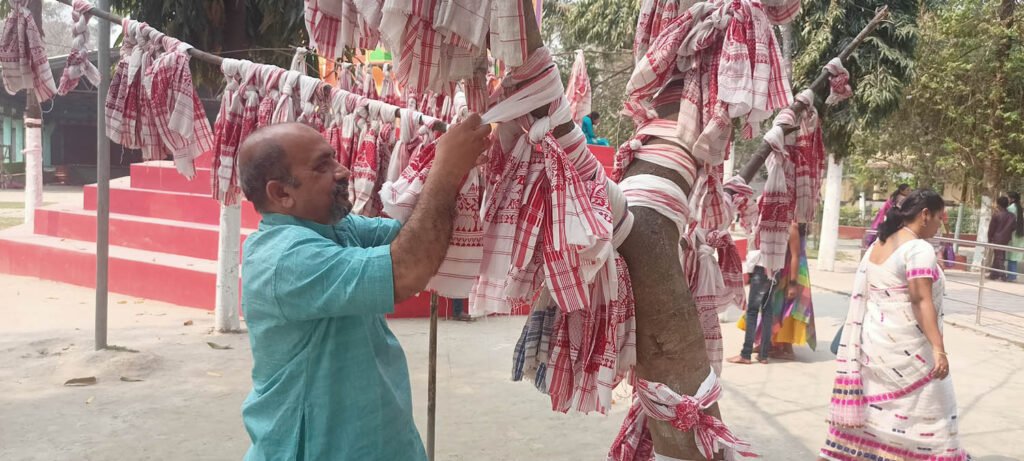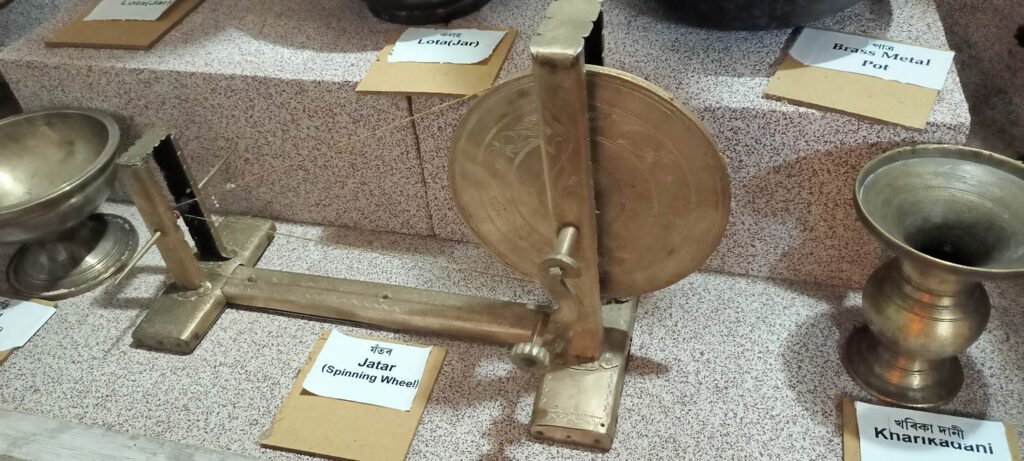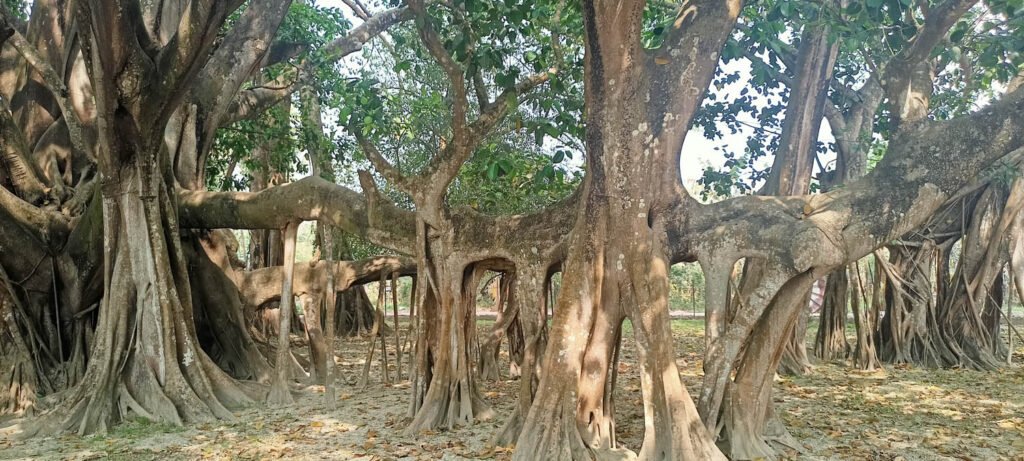The experience of visiting a destination popular among locals can be matchless. Barpeta Satra, the centre of Assamese Neo-Vaishnavism, is one such. A mere 130 km approx. from Guwahati via Rangia, with several attractions en-route, the journey is as splendid as the destination.
Just shy of Pathsala, take the left turn at Morka Chowk towards Jalikhata. A mammoth banyan tree, over 200 years old, is the sight to behold here. Perhaps one of the largest banyans in the region, it stands tall as a symbol of conservation and cultural heritage—and so quintessentially Assam! Next on the route is Sorbhog, meaning gift of sor orthecreamy layer that settles on milk. True to its name, Sorbhog is delightful, it’s milk cream and curd making their way to the heart. For the soul of course, there is Gorokhiya Gohain Than, a Lord Krishna temple that draws pilgrims by the droves and where you tie an Axomia gamosa around a tree at the complex, the customary thing to do, which wonderfully promoted both culture and the local economy.


Sorbhog has more—a forgotten slice of history dating to World War II. Five kilometers away, in Barnagar, in a few renovated buildings of a World War II aerodrome, now occupied by locals, you are welcomed with stories and friendship. The historicity of the unoccupied shack-like buildings at Ketekibari are as interesting. Unfortunately, River Beki, with a course that changes every monsoon has completely submerged the airstrip that had been developed on its banks. The aerodrome itself had been set ablaze during the Quit India movement under the leadership of Natyachariya Brajanath Sarma (1894-1960), a dramaturgist who performed plays in what we today know as mobile theatres.

A visit to Sorbhog can be followed by a trip to Manas National Park, and way back visit to Barpeta Satra, perhaps the oldest satra in the region. Established by Mahapurush Madhabdeb in 1583, it has served as a model for subsequent ones. A treasure trove of traditional art, culture and green fireworks, Barpeta town is a hub of Sattriya heritage, with Neovaishnavite satras, historical and cultural monuments imploring visits. There is also the Barpeta Museum (closed on 2nd, 4th Saturdays, Mondays and Government Holidays) which offers a fabulous display of sculptures, musical instruments, garments, ornaments, manuscripts, coins…. Last but not the least would be a shop-stop for the famed Assamese jewellery—gamkharu, dholbiri and more.
